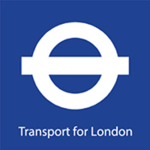Using Big Data to Improve London’s Transport Network
Published Mar-19-18Breakthrough:
Big data pilot projects and studies to boost safety and ease congestion.
Company:
Transport for London, United Kingdom
The Story:
 Like many big cities, London has a vast transport network to get its citizens and visitors safely from A to B in a timely fashion. Doing so is a complex task as millions of tube, bus and rail passengers rely on it every single day. Consequently, managers are continually looking at ways of improving their services. One area that is gaining a lot of traction is big data.
Like many big cities, London has a vast transport network to get its citizens and visitors safely from A to B in a timely fashion. Doing so is a complex task as millions of tube, bus and rail passengers rely on it every single day. Consequently, managers are continually looking at ways of improving their services. One area that is gaining a lot of traction is big data. Every day, Transport for London (TfL) the body responsible for the transport system in the capital collects vast amounts of data such as the number of people going through the ticketing system and location and prediction information of buses going through the iBus location system. Consequently, the information provides insights into how people are moving across the network.
Now, attention is focused on how to glean value from all this data, turning it into useful information for staff and passengers to improve safety and how the network operates among other factors.
Pilot Projects
There are and have been a number of pilot projects and experiments to find out what can be learned from the data. In late 2017 a four-week study that collected depersonalized Wi-Fi data revealed how information could be used to reduce crowding and prioritize transport investment. A specially created algorithm broke the data into different movement types to help understand what passengers were doing at particular times during their journeys. One of the key findings from 18 different routes between King's Cross St Pancras and Waterloo was that people don't use the shortest route when changing Tube lines.
"This pilot has revealed useful insights into how people crisscross London using the Tube, and the potential benefits this depersonalized data could unlock, from providing better customer data to helping address overcrowding, are enormous," said Lauren Sager Weinstein, Chief Data Officer at Transport for London.
Another example of how analytics and big data are being used is to help improve safety across the UK's capital. By using data to study trends from serious injuries and deaths on the roads, the biggest contributory factors were identified. This led to the creation of better ways to take preventative action. One of the fruits of this work is an interactive digital collision map which allows anyone to see where historic collisions have taken place in London during the previous ten years. This useful tool is a part of the Mayor of London’s vision to eradicate death and serious injuries from collisions on the city's roads by the year 2041.
Big Data Opportunities
There are so many opportunities that arise from using big data that TfL is not going it alone. To encourage innovation in this sector it is making as much of the data as it can freely available via its website and through a Unified API for developers (currently more than 14,000 developers are registered for this).
According to the transport body, the availability of data and the apps and platforms that are being developed from it are not only improving the services it offers but they're also creating new jobs and businesses.
Next Story »

